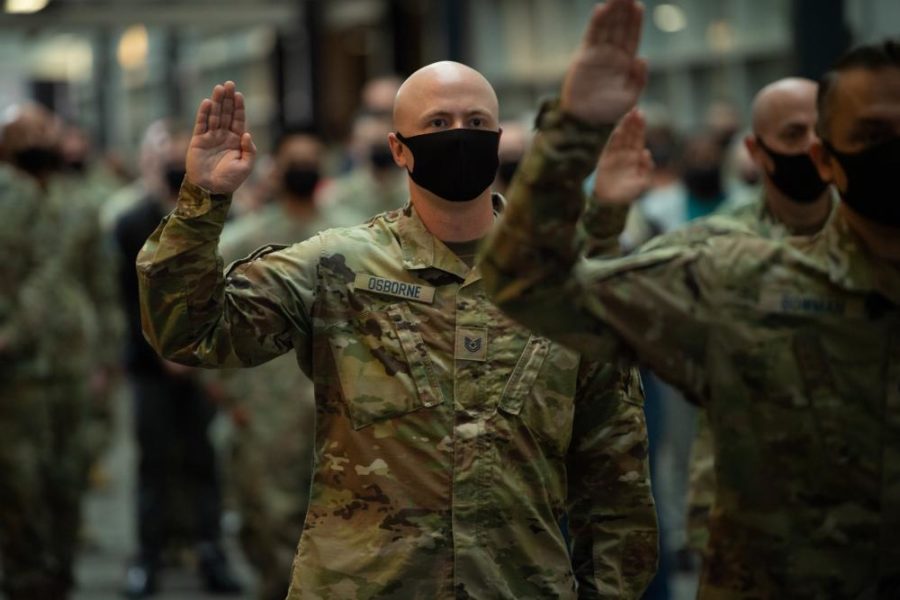Space Operations Command welcomed its first six Army Soldiers at a transfer ceremony Oct. 1 at Peterson Space Force Base, Colo., amid concerns that units slated for transfer to the Space Force will be held up until Congress passes a fiscal year 2022 defense budget.
The six enlisted Soldiers from the 53rd Signal Brigade at Schriever Space Force Base, Colo., are now Guardians responsible for satellite communications as part of SpOC’s Space Delta 8.
The service members are part of an initial cadre of just 50 Soldiers, Sailors, and Marines approved for transfer to the Space Force during the 2021 fiscal year, chosen from more than 3,700 applicants. But hundreds more future Guardians whose units are transferring from other services will not move until Congress acts.
Space Force spokesperson Lynn Kirby told Air Force Magazine that the first round of 50 transfers and a second round of 455 transfers will not be affected by the National Defense Authorization Act delay, but the service members who are part of the unit transfers will not move.
“The [continuing resolution] does not affect our ability to continue transferring personnel from the other services except for the members encumbering billets at the Army and Navy units slated for transfer,” she said. “Those units and billets do require authorization in the NDAA to transfer.”
Some 215 additional uniformed service members and 259 civilians are held up from transferring to the Space Force until Congress passes the 2022 NDAA.
Those individuals are part of Army and Navy units slated to move to Space Force, part of a department-wide push to reduce duplication and create better unity of effort.
Speaking at the Air Force Association’s Air, Space & Cyber Conference in National Harbor, Md., SpOC commander Lt. Gen. Stephen N. Whiting highlighted the important role SpOC personnel play.
“We sit at the nexus of the new Space Force and U.S. Space Command because we are the service component, the Space Force service component to U.S. Space Command,” Whiting said at a media roundtable Sept. 20. “We’re the largest of those service components, and we present capability and personnel to Gen. [James H.] Dickinson at U.S. Space Command for operational employment.”
Congress passed and President Biden signed, just hours before a midnight deadline Sept. 30, a continuing resolution to keep the government open until Dec. 6. Congress must pass an FY22 NDAA to start any new programs, including paying for the unit transfers, many of which are in-place, such as those at Schriever.
That also means the Department of the Air Force is capped at fiscal year 2022 end strength numbers.
Space Force announced Sept. 30 that 670 additional military members had been chosen for transfer in fiscal year 2022.
Vice Chief of Space Operations Gen. David D. Thompson told Air Force Magazine on the sidelines of the ASC conference that service members and units waiting to transfer will still do their jobs for their home services, but that the NDAA passage would help the continued standing up of the Space Force.


